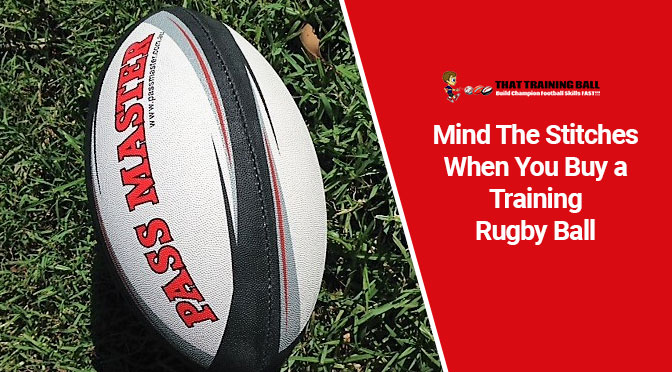Before you plan to purchase a rugby ball to let your kids train and practice, you need to take into account a lot of factors. The weight, the bladder of the ball, the material it is made up of, the spikes on the surface of the ball – you may have taken into account all these aspects that make a difference in the way the ball will behave when your kids take to the pitch and to the extent it will serve the purpose.
Perhaps, you have not taken into account one little thing, which will determine the behaviour of the ball as well. It is – the stitches. Well, the stitches have a lot to do with the way the ball will behave.
When you opt to buy a training rugby ball, you will find some with stitches that show up between the two slices that run along the length of the ball, giving it its customary shape.
You will find another type of ball, which will not show up the stitches. The stitch line would run internally, not showing up, thus giving a seamless look and feel to the ball.
Now, if you ask me which ball is to be chosen, you can choose either variety, and there is not question of one variety being superior than the other one. It is the behaviour of the ball off the air that will differ, depending upon the stitches.
Stitches That Shows Up
In case of balls, which come up with stitches that show up, there will be more swings and swerves. The logic behind this is purely aerodynamic and well beyond the scope of discussion within this limited space.
However, superficially it can be told that while travelling through the air, the movement of the ball is to some extent, influenced by the friction of the air with the stitches, resulting the ball to swing and swerve a bit more than normal.
Hence, if you are to purchase a training rugby ball from any training ball store opt for the one that comes with internal stitches, or the stitches that do not show up.
What happens to the balls with internal stitches?
In case of balls that come with superior, compact and internal stitches that do not protrude up along with the surface at the point of junction between the slices of the ball body, the swing will be true.
In other words, the balls in these cases will have a much constricted and compact getup. The absence of any part of the stitch on the surface whatsoever means, there will be no extra friction between the air and the ball. This will minimise drastically the probability of false swings when the ball is airborne. Naturally, players will be able to have a better control of the ball. Naturally, this makes them perfect training balls to shop online if you want to.
That Training Ball comes up with this variety of training balls and if you are looking forward to pick up one from us, get in touch with us today. We will help you out in your pursuit for the best and the most perfect rugby training ball for your kids.








